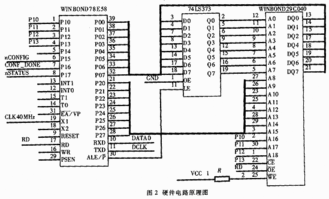Microcontroller programming and Android development are two distinct but interconnected fields in the realm of software engineering. While microcontroller programming focuses on embedded systems and lowlevel hardware interactions, Android development revolves around creating applications for the Android operating system. Let's delve into each domain individually and explore their intricacies.
Microcontroller programming involves writing code for microcontrollers, which are small, selfcontained computers embedded within electronic devices. These devices range from simple gadgets like microwave ovens to complex systems like automotive engine control units.
*Embedded Systems*: Microcontrollers serve as the brains of embedded systems, controlling various functions such as sensing inputs, processing data, and driving outputs.
*Languages*: Commonly used languages for microcontroller programming include C, C , and assembly language. These languages provide direct access to hardware resources and allow for efficient code execution in resourceconstrained environments.
*Development Tools*: Developers typically use integrated development environments (IDEs) such as Keil, MPLAB X, or Arduino IDE for writing, compiling, and debugging microcontroller code. These tools offer features like syntax highlighting, code completion, and simulation capabilities.
*Hardware Platforms*: Popular microcontroller families include Arduino, PIC, AVR, and STM32. Each family has its strengths and is chosen based on factors like performance, cost, and available peripherals.
*Applications*: Microcontroller programming finds applications in diverse fields such as home automation, robotics, industrial automation, and consumer electronics.

Android development focuses on creating applications for devices running the Android operating system, which powers a significant portion of the world's smartphones, tablets, and other gadgets.
*Java and Kotlin*: Android apps are primarily developed using Java or Kotlin programming languages. Kotlin, introduced by JetBrains, has gained popularity for its concise syntax and enhanced safety features.
*Android SDK*: The Android Software Development Kit (SDK) provides a set of tools, libraries, and APIs for building Android applications. It includes components for UI design, data storage, networking, and multimedia.
*Integrated Development Environment (IDE)*: Android Studio, based on IntelliJ IDEA, is the official IDE for Android development. It offers features like code refactoring, visual layout editor, and builtin emulators for testing apps on various device configurations.
*User Interface (UI) Design*: Android apps follow the Material Design guidelines, which emphasize a clean and intuitive user interface. Developers use XML layouts and resource files to define UI elements such as buttons, text fields, and navigation drawers.
*Publishing*: Once an app is developed, developers can distribute it through the Google Play Store or other thirdparty app stores. Publishing involves preparing promotional materials, setting pricing and distribution options, and adhering to store guidelines.
Integration of microcontrollers with Android devices opens up new possibilities for smart systems and IoT (Internet of Things) applications. Through technologies like Bluetooth, WiFi, and USB, Android apps can communicate with external microcontrollers to control hardware peripherals, gather sensor data, and automate tasks.
For example, an Androidcontrolled home automation system may use a microcontroller to interface with sensors and actuators for managing lights, thermostats, and security cameras. The Android app serves as a user interface, allowing homeowners to monitor and control their smart home remotely.
Microcontroller programming and Android development are complementary skills that enable engineers to create innovative solutions for a wide range of applications. Whether it's building intelligent gadgets, designing interactive interfaces, or connecting devices to the digital world, proficiency in these domains opens doors to exciting opportunities in the everevolving field of technology.
文章已关闭评论!
2024-11-26 12:15:16
2024-11-26 12:14:01
2024-11-26 12:12:36
2024-11-26 12:11:20
2024-11-26 12:10:08
2024-11-26 12:08:57
2024-11-26 12:07:42
2024-11-26 12:06:17